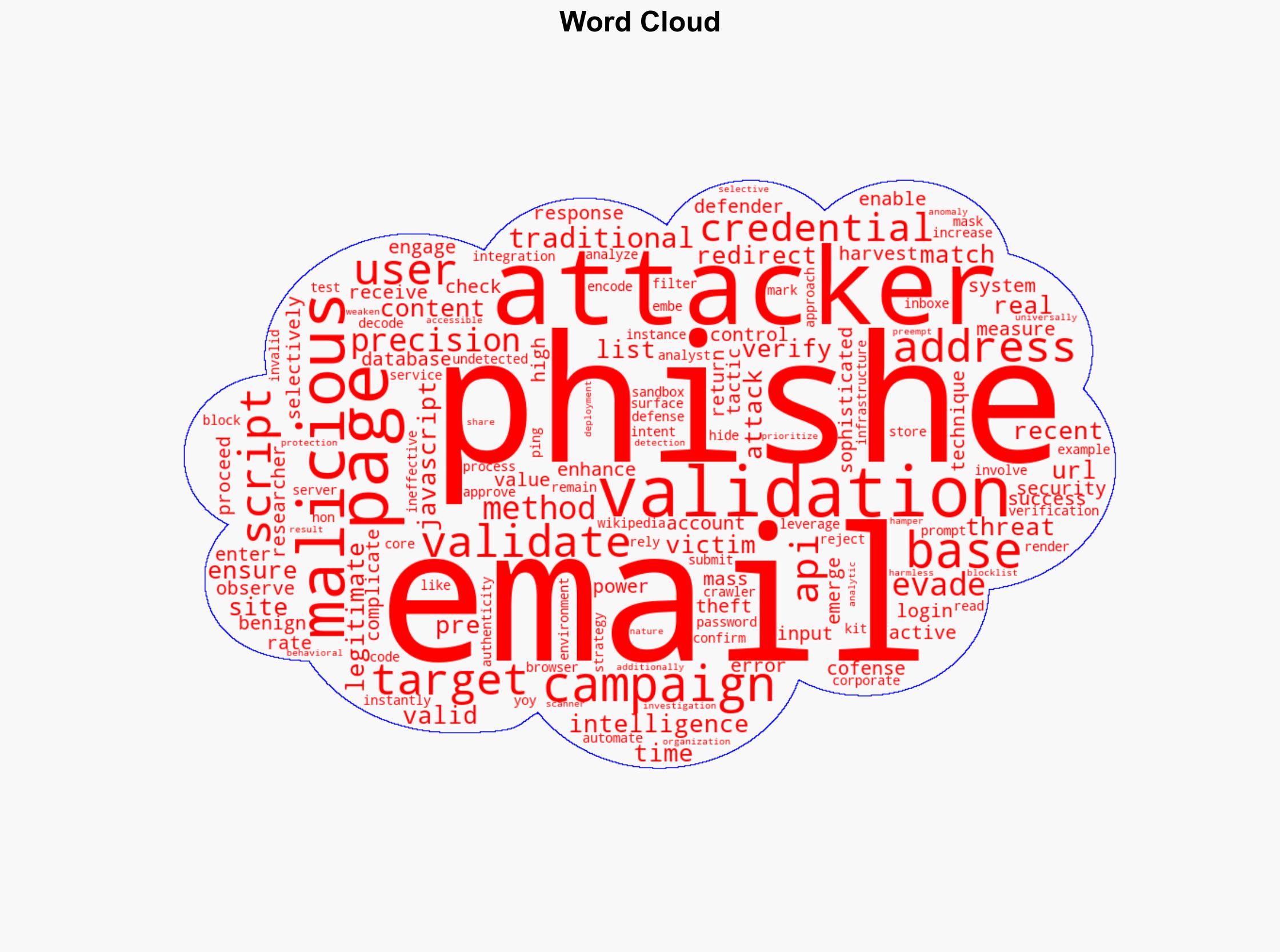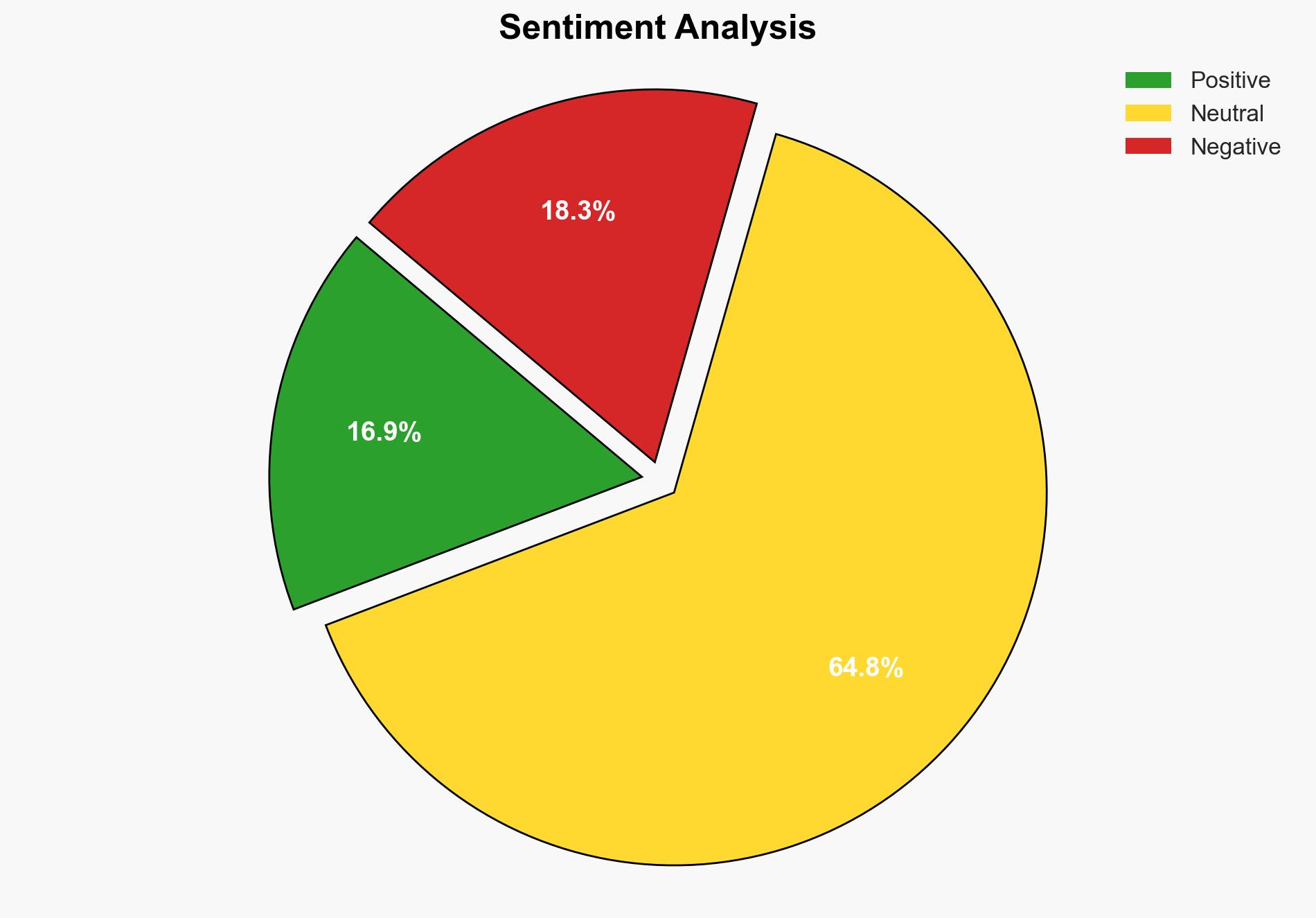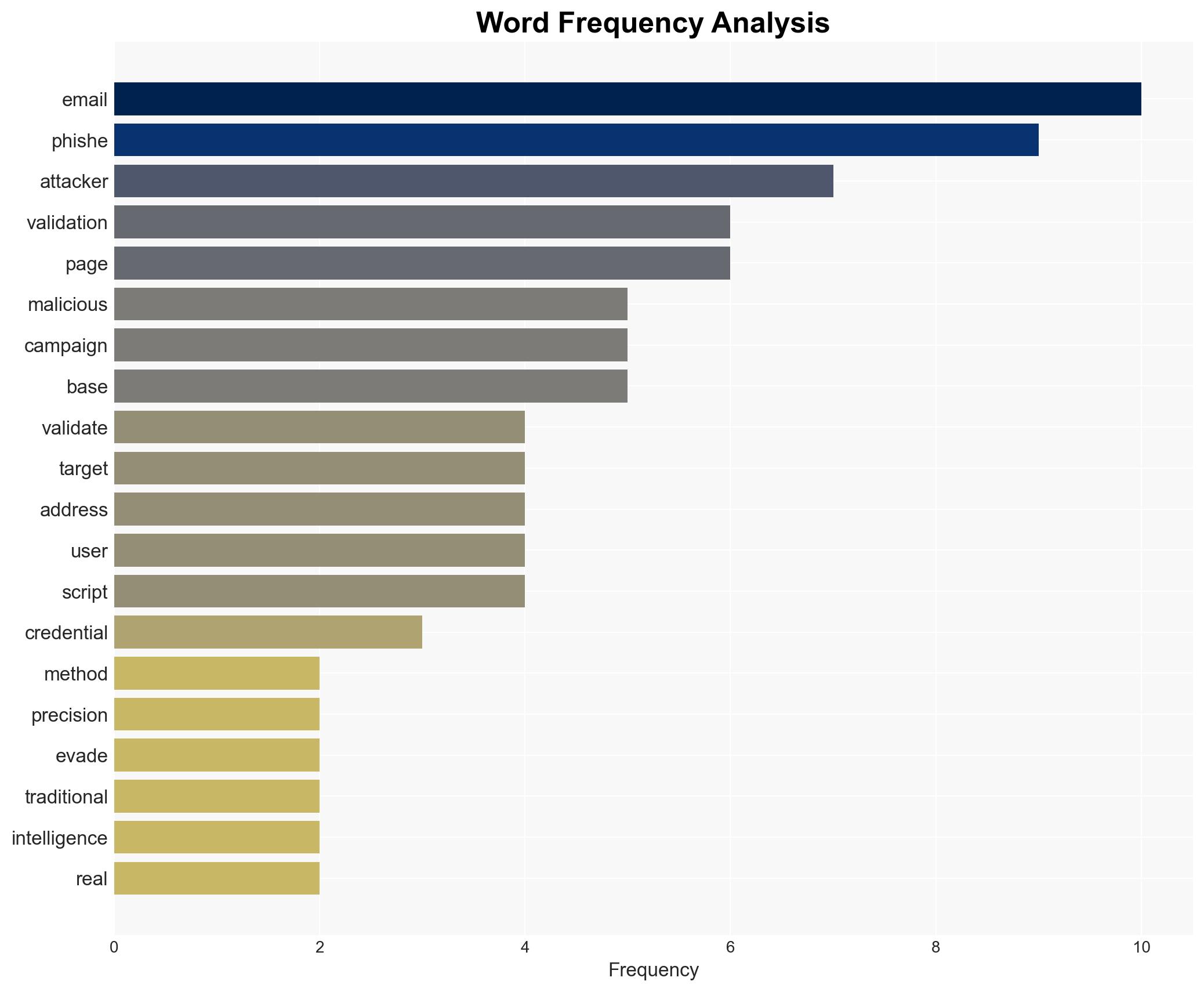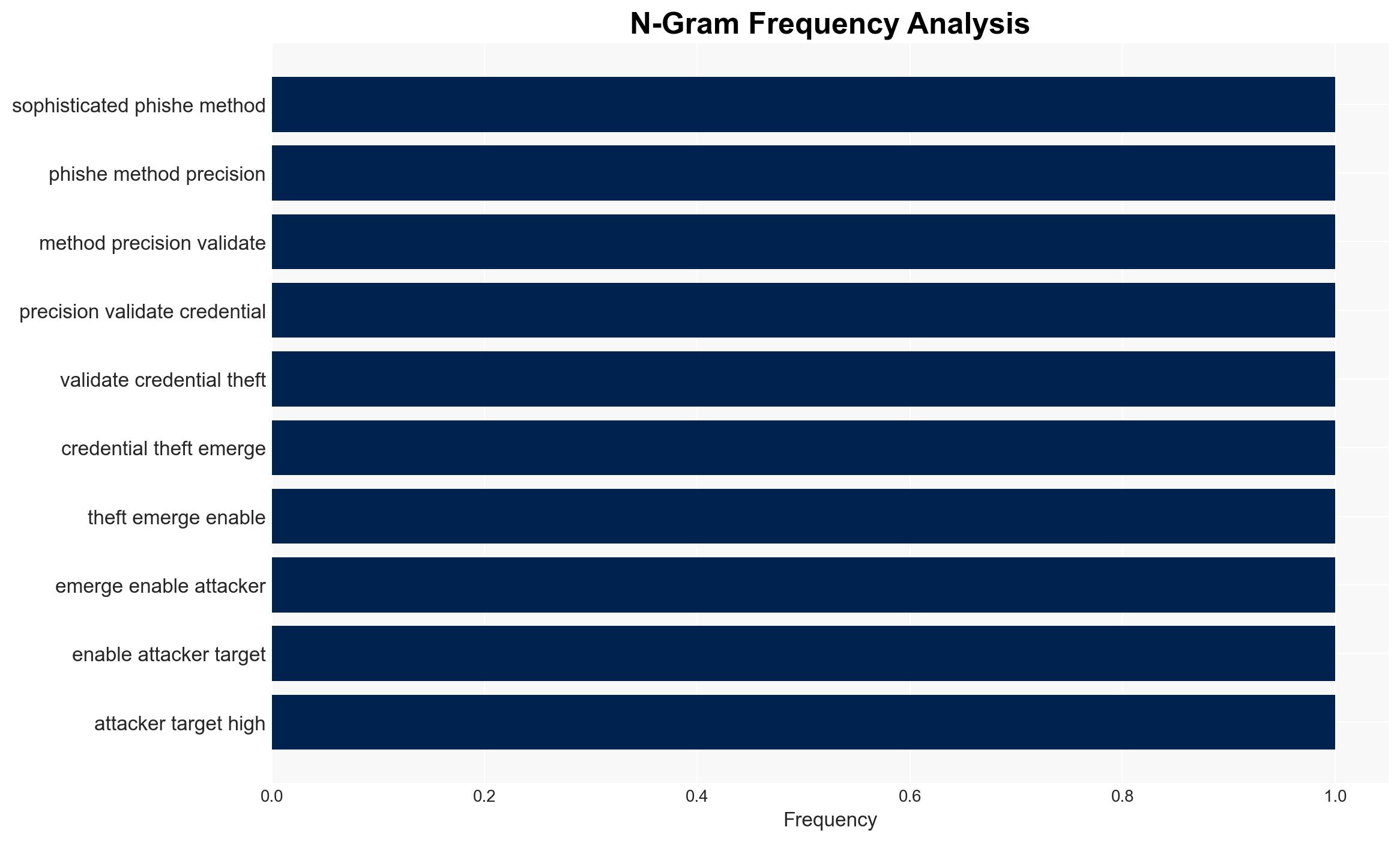Precision-Validated Phishing Elevates Credential Theft Risks – Infosecurity Magazine
Published on: 2025-04-09
Intelligence Report: Precision-Validated Phishing Elevates Credential Theft Risks – Infosecurity Magazine
1. BLUF (Bottom Line Up Front)
Recent advancements in phishing tactics, specifically precision-validated phishing, pose a significant threat to credential security. Attackers are employing real-time email validation to target high-value accounts, effectively bypassing traditional security measures. This method complicates defensive responses and requires immediate attention from cybersecurity stakeholders to mitigate risks.
2. Detailed Analysis
The following structured analytic techniques have been applied for this analysis:
General Analysis
Precision-validated phishing involves the use of real-time email validation to ensure that only active and targeted email addresses receive malicious login prompts. This tactic uses JavaScript-based scripts and API integrations to verify email authenticity, allowing attackers to selectively engage with pre-harvested lists of victims. By embedding validation scripts within phishing kits, attackers can redirect invalid email attempts to legitimate sites, masking their malicious intent. This method significantly increases the success rate of phishing campaigns while complicating detection and response efforts.
3. Implications and Strategic Risks
The precision-validated phishing technique presents several strategic risks:
- National Security: Compromised credentials could lead to unauthorized access to sensitive government systems, posing a threat to national security.
- Regional Stability: Phishing campaigns targeting critical infrastructure could disrupt regional stability by affecting essential services.
- Economic Interests: Corporate espionage and financial fraud facilitated by credential theft could have significant economic repercussions.
4. Recommendations and Outlook
Recommendations:
- Implement advanced behavioral analytics and anomaly detection systems to identify and respond to phishing attempts in real-time.
- Enhance training programs for employees to recognize and report phishing attempts promptly.
- Encourage the development and adoption of more robust email validation and verification technologies.
Outlook:
Best-case scenario: Organizations rapidly adopt advanced detection technologies and improve user awareness, significantly reducing the success rate of phishing attacks.
Worst-case scenario: Attackers continue to refine their tactics, leading to widespread credential theft and severe disruptions across multiple sectors.
Most likely outcome: A gradual improvement in defensive measures will mitigate some risks, but persistent threats will require ongoing vigilance and adaptation.
5. Key Individuals and Entities
The report does not specify individuals by name but highlights the involvement of sophisticated attackers leveraging advanced phishing techniques. Organizations such as Cofense Intelligence have been instrumental in identifying and analyzing these threats.




